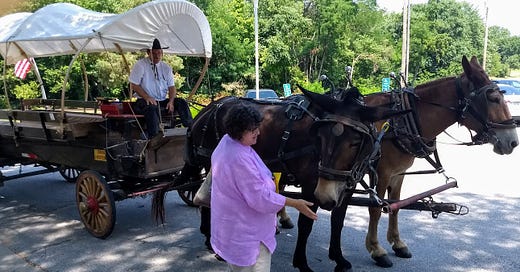How Animals (and their people) Went West
ANNETTE TELLS TALES Most 19th Century Westward Migrants Across the US Plains to California and Oregon Travelled on Four Feet. So What's Their Story?
How Long is This Post? Around 6,000 words. About 30 mins read.
James Philly was all set to move his family to California, and get rich. It was 1849, and the Phillys would have a head start over the th…



